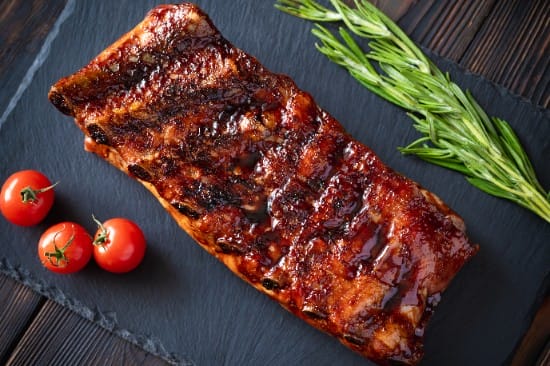For much of the country, Labor Day marks the end of the grilling season. Here in South Florida we can enjoy year-round grilling, but it’s a good time to review some grilling basics so we can make the most of our outdoor cooking as the evening weather gets a little milder.
Gas or Charcoal
This will be the first decision you make. Gas grills are convenient because they are easy to light, usually with the touch of a button, and they require less clean-up. Charcoal grills are cheaper and tend to be more compact but they burn hotter, and meat lovers argue there’s no better way to cook a steak. There are potential cancer risks associated with charcoal cooking, as well as greater environmental impact than gas grills. Coal produces roughly twice the greenhouse emissions as propane, which is another reason gas grilling has become so popular.
What type of Coal
Most of us will use manufactured briquettes for charcoal grilling. Briquettes are readily available at your local supermarket or big box store, are easier to light and burn longer. Purists may want to try lump coal, which is basically charred wood with nothing extra added. Briquettes are mostly compacted sawdust with additives to help create a steady burn. There are heated debates among hard-core grill masters over the pros and cons of each type of charcoal, but if you can’t decide, you can always use both.
Lighting the Grill
There are three main ways to light coals–using a chimney (a metal tube where the charcoal is placed and ignited using newspaper), adding lighter fluid to the coals or using ready-to-light briquettes that have lighter fluid built-in. Most gas grills are ignited with just the touch of a button. We suggest keeping a spare propane tank on hand so you literally don’t run out of gas in the middle of your cookout.
Heat Zones
Whichever grill you choose, it’s good to have two temperature zones for direct and indirect cooking. This is achieved through two independent flames as well as two grate levels on gas grills and through distribution of the coals on the charcoal grill. Direct heat is best for steaks, burgers, fish, chicken and vegetables. Indirect is used for larger or tougher meats that you would cook low and slow like ribs or brisket. We recommend buying grill-ready cuts from our meat purveyor D’artangan Foods.
Clean-up
A warm grill is easier to clean either before or after cooking. Run a damp wire brush in the direction of the grate lines and use a paper towel dipped in a neutral vegetable oil to wipe down the grill. If you have a stubborn grease mess to clean up, you can use a mixture of baking soda and vinegar to scrub the grates.
Charcoal can be reused, but once you’re ready to discard, make sure the coals are fully extinguished then wrap them in foil before putting in the trash.
Enjoy your weekend grilling but let us take care of the meal planning and prepping the rest of the week. The Pickled Beat delivers personalized, chef-created meals right to your door. Contact us for a free consultation.
Here’s a Labor Day grilling recipe for you to try.
All American Barbecued Baby Back Ribs
- 1 teaspoon(s) cajun seasoning or creole seasoning
- 1 teaspoon(s) oregano, dried
- 1 teaspoon(s) cumin
- 1 teaspoon(s) paprika sweet or hot
- 2 1/2 pound(s) baby back ribs about 2 large racks
- SAUCE
- 2 tablespoon(s) butter, organic, unsalted
- 2 medium onion chopped
- 1 small celery stalk minced
- 16 ounce(s) Imagine organic beef broth
- 2 cup(s) ketchup
- 1 cup(s) white vinegar
- 3/4 cup(s) light brown sugar packed
- 2 ounce(s) lemon juice
- 3 tablespoon(s) Worcestershire sauce
- 2 tablespoon(s) steak sauce
- 1 1/2 teaspoon(s) chili powder
- 1 teaspoon(s) paprika
- 1 teaspoon(s) salt
- 1/2 teaspoon(s) mustard, dry
- 1/2 teaspoon(s) black pepper
- 1 teaspoon(s) Tabasco pepper sauce
Mix the Cajun seasoning, oregano, cumin, and paprika in a small bowl to blend and rub the mixture all over the ribs. Wrap the ribs in heavy-duty foil, encasing them completely, and refrigerate for at least 1 hour and up to 1 day.
Preheat the oven or grill with indirect heat to 200°F. Place the wrapped ribs on a heavy baking sheet and bake for about 4 hours, or until the meat is very tender. Unwrap the ribs and let them cool.
Meanwhile, make the barbecue sauce: Melt the butter in a large heavy saucepan over medium heat.
Add the onions and celery, and sauté for 5 minutes, or until the vegetables are tender. Mix in the beef broth and all the remaining ingredients and bring to a boil over high heat.
Then reduce the heat to medium-low and simmer, uncovered, stirring occasionally for 1 hour, or until the sauce reduces and thickens slightly.
Coat the ribs with half of the sauce and marinate for at least 1 hour at room temperature or for up to 1 day in the refrigerator.
Reserve the remaining barbecue sauce.
Preheat the grill. Grill the ribs, basting with the sauce until they are warmed through and the sauce starts to carmelize.


